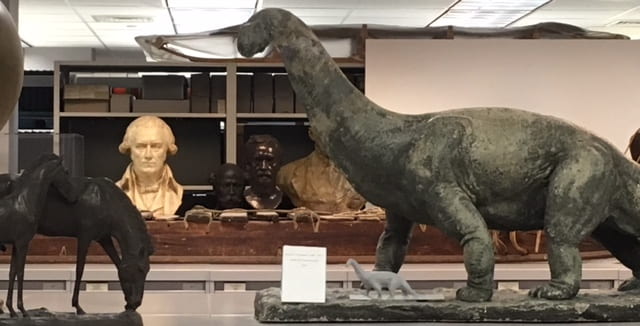
On March 9, 2018 the collaborative visited the Research Library and Special Collections at the American Museum of Natural History. Research Services Librarian, Mai Reitmeyer and Special Collections Archivist, Becca Morgan hosted us for a tour. The library, established in 1869 as a part of the charter for the museum, supports more than 200 active scientific researchers in astrophysics, paleontology, earth and planetary science, anthropology, zoology, invertebrates, and vertebrates departments including those working and studying in the museum. Each of the science departments within the museum also have their own libraries and archives.
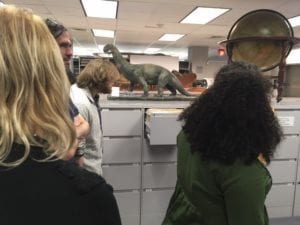
The library currently holds over 1 million photo items including prints and slides. The photos are organized in vertical file storage cabinets and cataloged by area of study. The collection contains a large number of lantern slides that were once used for public lectures at the museum.
The AMNH Research Library is currently collaborating with the New York-based Women in Natural Sciences Chapter of the Association for Women in Science to the Untold Stories of Women in Science project. The scope of the larger project aims to amplify all underrepresented voices in science. Talk about archival silences!
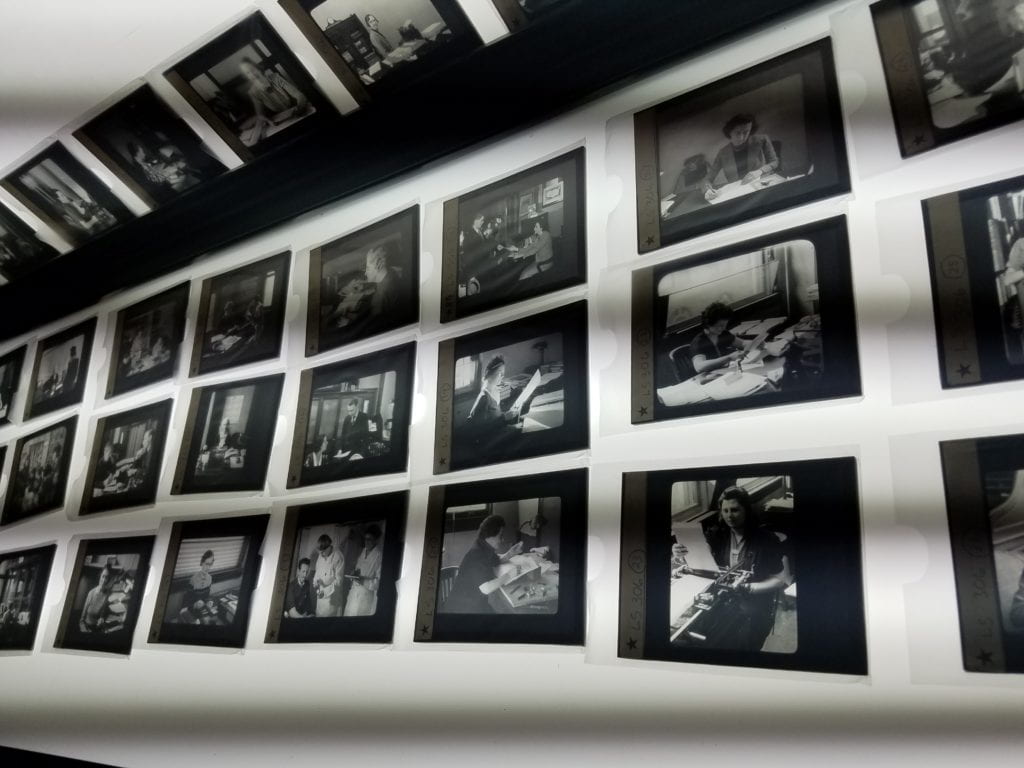
AMNH has also begun to use the archival description standard EAC CPF (Encoded Archival Context for Corporate bodies, Persons, and Families) in order to link relevant records together. This is important to because it means they can more easily describe something like an expedition, which involves multiple people and may span multiple collections (which are housed in different departments). It also has implications for archival silences, like the stories of local guides hired to aid in fieldwork. Everyone who worked on the expedition can be linked in the record, for example, the staff who supported the lead scientist, so it’s more robust than a typical finding aid, which usually just lists one person or corporate body as the creator.
AMNH is also collaborating with the Biodiversity Heritage Library and Internet Archive to digitize field notebooks created before 1923. The notebooks are available through DPLA and Internet Archive. In the Rare Book Room we briefly discussed the differences between scientific field journals, which contain field notes from expeditions, and non-scientific field journals, like those of Ernest Thompson Seton, founder of the Woodcraft Indians and one of the founding pioneers of the Boy Scouts of America.


Earnest Thompson Seton’s Yellowstone Field Journal, 1897
AMNH uses rare books with students in middle-school and up. In their summer institute, Coding Climate Change students use map collections and coding to show climate change. Students also view rare books to learn about books as tools of scientific communication and visualization.
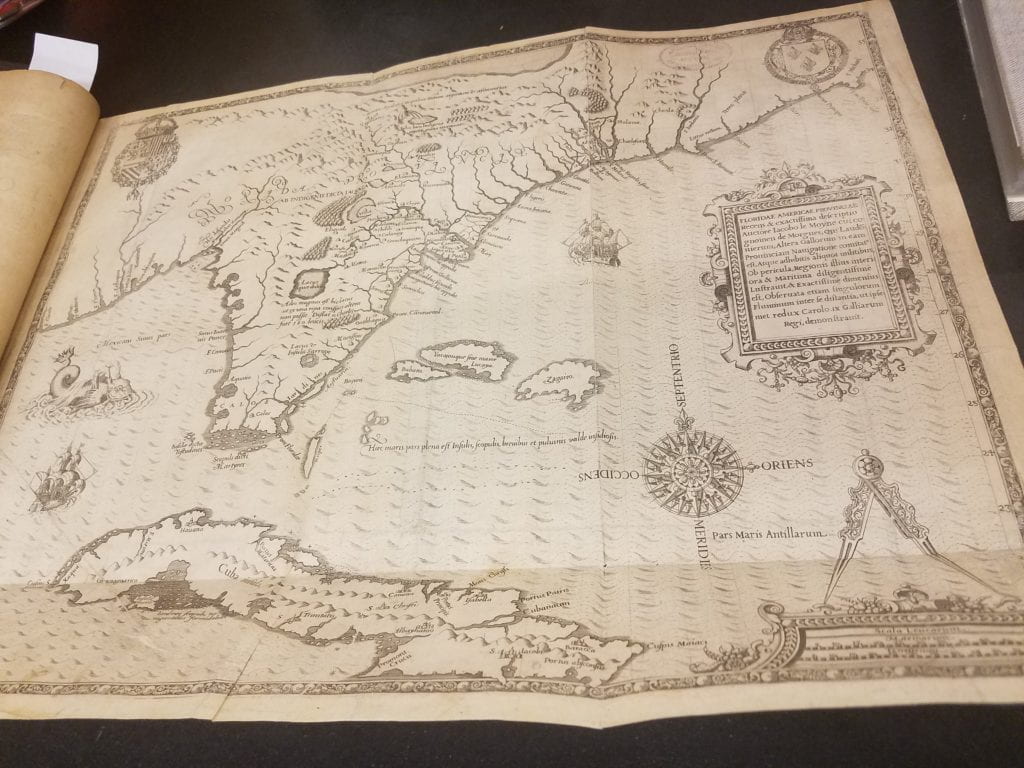
Lastly, we viewed Louis Renaud’s 18th century fish drawings and the oldest item in the rare book room, a 1551 book from Conrad Gessner, the father of modern zoology.
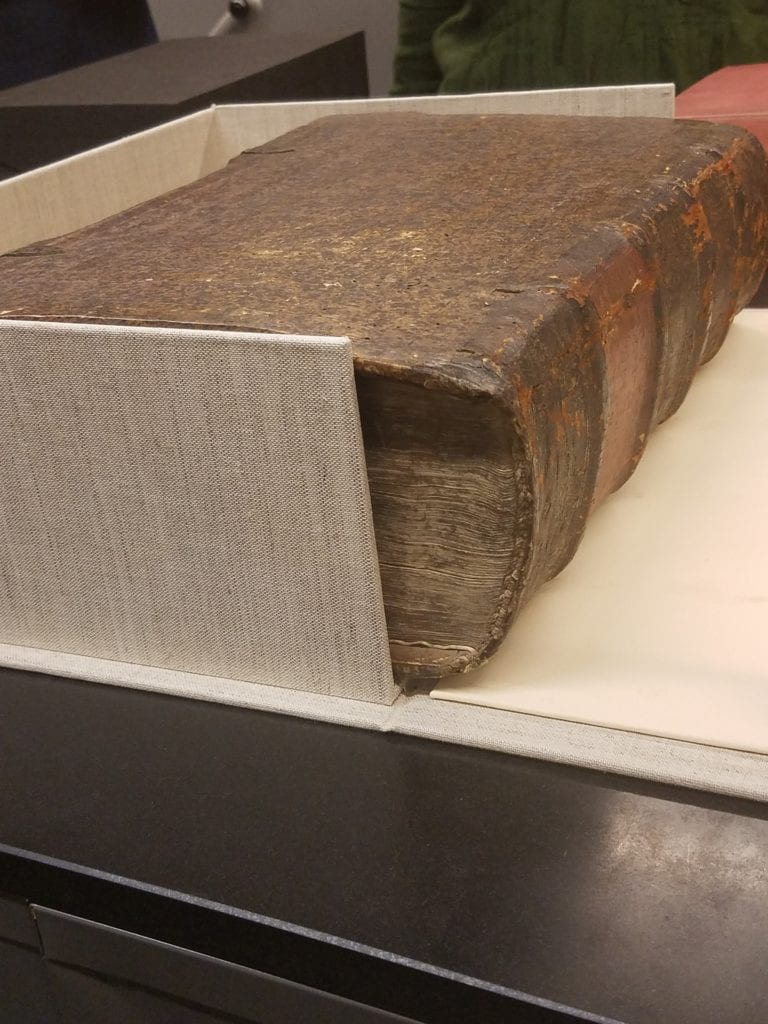
Many of AMNH’s collections are available online. Check out some of their resources here and share your thoughts in the comments below:
